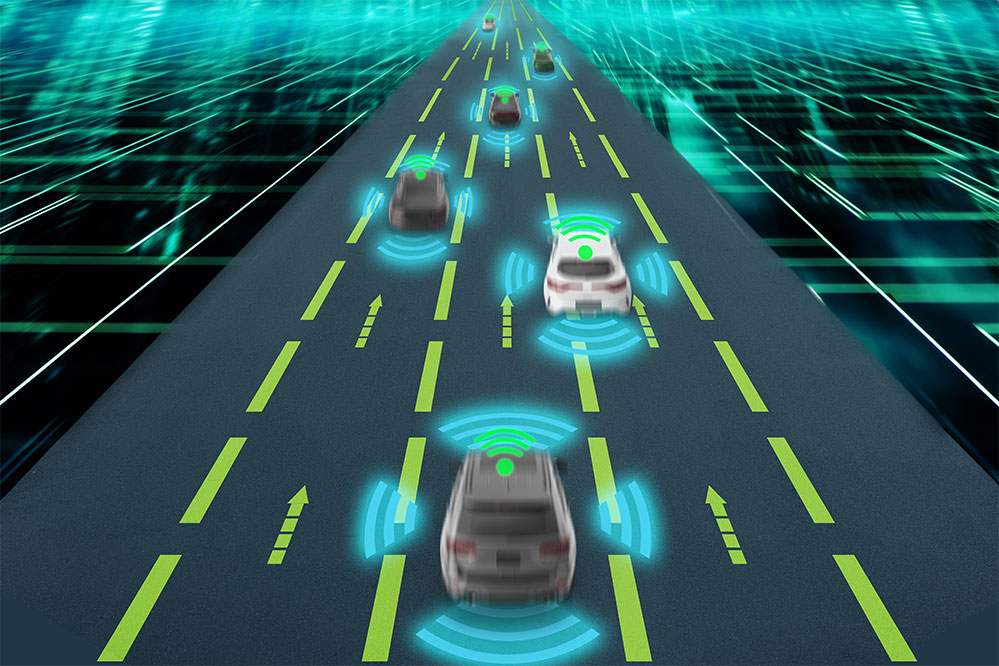Introduction to Eco-Driving
If there’s one thing that characterizes driving in any major city, it’s the constant stop-and-go as traffic lights change and as cars and trucks merge and separate and turn and park. This constant stopping and starting is extremely inefficient, driving up the amount of pollution, including greenhouse gases, that gets emitted per mile of driving. One approach to counter this is known as eco-driving, which can be installed as a control system in autonomous vehicles to improve their efficiency.
What is Eco-Driving?
Eco-driving involves making small adjustments to minimize unnecessary fuel consumption. For example, as cars approach a traffic light that has turned red, “there’s no point in me driving as fast as possible to the red light,” says Cathy Wu, the Thomas D. and Virginia W. Cabot Career Development Associate Professor in the Department of Civil and Environmental Engineering and the Institute for Data, Systems, and Society (IDSS) at MIT. By just coasting, “I am not burning gas or electricity in the meantime.” If one car, such as an automated vehicle, slows down at the approach to an intersection, then the conventional, non-automated cars behind it will also be forced to slow down, so the impact of such efficient driving can extend far beyond just the car that is doing it.
The Challenges of Optimizing Eco-Driving
To address the question of how much of a difference eco-driving could make, researchers need to gather all available data about the system, from many sources. This includes the layout of the network’s topology, U.S. Geological Survey data showing the elevations, data on temperature and humidity, data on the mix of vehicle types and ages, and on the mix of fuel types. However, optimizing eco-driving is a challenging problem that involves many different factors and parameters, making it difficult to solve using traditional methods.
The Role of Artificial Intelligence
To solve these complex optimization problems, researchers are turning to artificial intelligence (AI) and machine learning algorithms, such as multi-agent deep reinforcement learning (DRL). However, a lack of adequate standard benchmarks to evaluate the results of such methods has hampered progress in the field. This is where the new benchmark system, called “IntersectionZoo,” comes in. IntersectionZoo is a tool that provides a rich set of characteristics that are important in solving real-world problems, especially from the generalizability point of view.
What is IntersectionZoo?
IntersectionZoo is a benchmark system that features 1 million data-driven traffic scenarios, making it uniquely positioned to advance the progress in DRL generalizability. The benchmark is intended to help address the issue of non-generalizability of existing deep reinforcement learning algorithms, which are not able to adapt to small modifications in the scenario, such as adding a bike lane or changing the timing of a traffic light. IntersectionZoo is openly available on GitHub, providing a tool for researchers to evaluate and improve their algorithms.
Conclusion
The development of IntersectionZoo is an important step towards optimizing eco-driving and reducing emissions in cities. By providing a benchmark system that can evaluate the performance of AI algorithms in a realistic and dynamic environment, researchers can develop more efficient and effective solutions for eco-driving. The goal of this study is to support the development of general-purpose deep reinforcement learning algorithms that can be applied to a wide range of applications, including autonomous driving, video games, security problems, robotics problems, warehousing, and classical control problems.
FAQs
Q: What is eco-driving?
A: Eco-driving is a control system that can be installed in autonomous vehicles to improve their efficiency and reduce emissions.
Q: What is IntersectionZoo?
A: IntersectionZoo is a benchmark system that features 1 million data-driven traffic scenarios, designed to evaluate the performance of AI algorithms in optimizing eco-driving.
Q: Why is IntersectionZoo important?
A: IntersectionZoo provides a tool for researchers to evaluate and improve their algorithms, advancing the progress in DRL generalizability and optimizing eco-driving.
Q: What is the goal of this study?
A: The goal of this study is to support the development of general-purpose deep reinforcement learning algorithms that can be applied to a wide range of applications.
Q: What are the potential benefits of eco-driving?
A: The potential benefits of eco-driving include reducing emissions, improving air quality, and increasing the efficiency of transportation systems.











